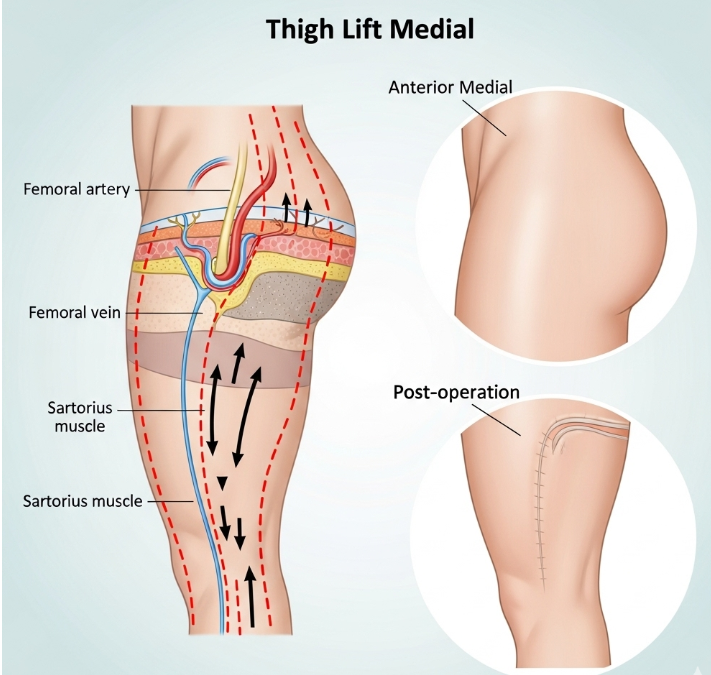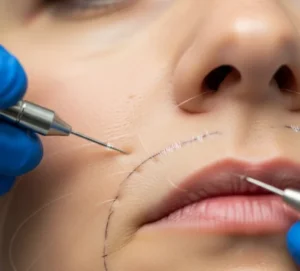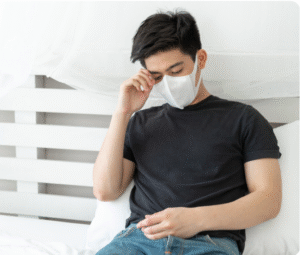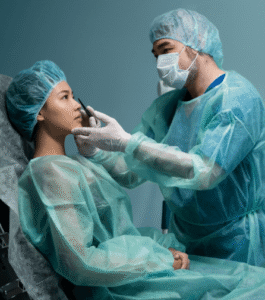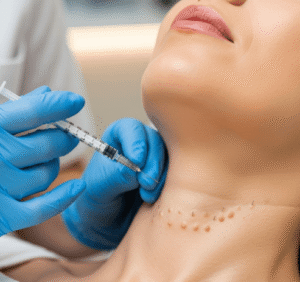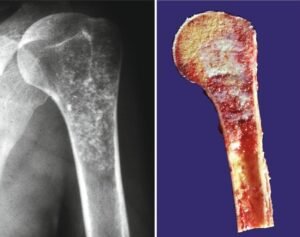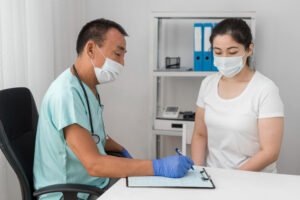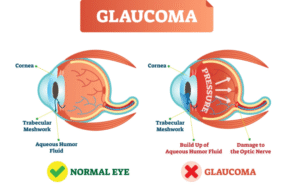What It Is
A medial thigh lift, also known as inner thigh lift, is a cosmetic surgical procedure that removes excess skin and fat from the inner thighs, creating a slimmer, firmer, and more toned appearance. It is especially popular among patients who have lost a significant amount of weight and are left with sagging or drooping skin in the thigh region.
The surgery improves both the shape and contour of the legs, helping patients achieve a more proportionate lower body.
Why It’s Done
Patients choose a medial thigh lift because:
- They have loose, sagging skin on the inner thighs after weight loss or aging.
- Chafing and skin irritation occur due to folds of excess skin.
- They want legs that appear slimmer and more defined in clothing.
- Exercise and non-surgical methods have not corrected skin laxity.
Good candidates include:
- Men and women with moderate to severe inner thigh skin laxity.
- Patients who have reached a stable weight.
- Individuals in good overall health and non-smokers.
Alternatives
- Liposuction alone: Suitable for fat deposits with good skin elasticity but not effective for loose skin.
- Non-surgical tightening: Radiofrequency or ultrasound-based treatments may help mild cases, but cannot remove large amounts of skin.
- Other thigh lift options: Extended or vertical thigh lifts for patients with more extensive skin redundancy.
Preparation
Before undergoing a medial thigh lift in Korea, patients will:
- Have a consultation to evaluate skin laxity and body proportions.
- Undergo medical tests such as bloodwork and ECG if needed.
- Stop smoking and alcohol for at least 4 weeks before surgery.
- Avoid blood thinners and certain supplements.
- Arrange for 1–2 weeks of recovery time and home support.
How It’s Done
- Anesthesia: Typically performed under general anesthesia.
- Incision: An incision is made in the groin crease, extending down toward the knee in some cases, depending on the amount of skin to be removed.
- Skin and fat removal: Excess skin is excised, and liposuction may be used for contouring.
- Skin tightening: The remaining skin is pulled tight and sutured to create a smoother thigh contour.
- Duration: 2–3 hours, often performed as an outpatient procedure or with a short hospital stay.
Recovery
- First week: Swelling, bruising, and tightness in the inner thighs are expected. Walking may be slightly uncomfortable at first.
- Compression garment: Worn for 4–6 weeks to minimize swelling and support healing.
- Return to work: Most patients resume light activities in 1–2 weeks.
- Exercise: Gentle walking is encouraged, but strenuous activity and leg exercises should be avoided for 4–6 weeks.
- Final results: Noticeable improvements after swelling subsides, with final contour visible after 3–6 months.
Possible Complications
- Bruising, swelling, or temporary numbness in the thighs.
- Scarring along the groin crease (may extend downward in larger excisions).
- Wound healing delays due to thigh movement and skin tension.
- Rare risks: infection, asymmetry, or fluid accumulation.
Treatment Options in Korea
Diagnosis
Korean surgeons evaluate skin laxity, fat distribution, and thigh proportions through physical examination. 3D imaging may be used to show patients the expected outcome and plan incision placement.
Medical Treatments
Mild inner thigh laxity may be treated with non-surgical tightening devices such as radiofrequency or ultrasound, though results are limited compared to surgery.
Surgical or Advanced Therapies
- Medial thigh lift for inner thigh sagging.
- Combination with liposuction for refined contour and fat reduction.
- Extended thigh lift may be recommended if skin laxity extends across the entire thigh.
Rehabilitation and Support
- Regular follow-up appointments to check wound healing and scar progression.
- Scar management therapies such as silicone sheeting or laser treatments.
- Physiotherapy and lymphatic drainage massage to reduce swelling and improve comfort.
- Many Korean clinics provide multilingual aftercare for international patients.

